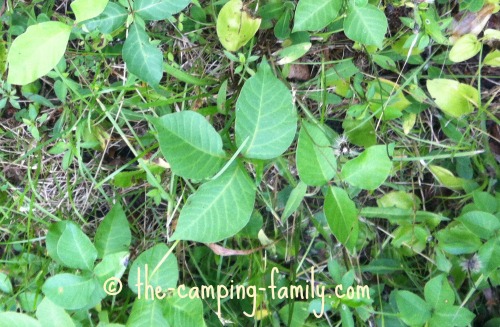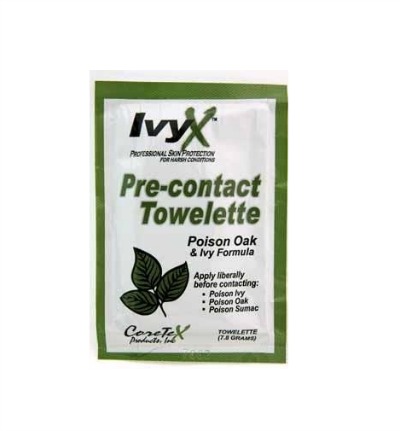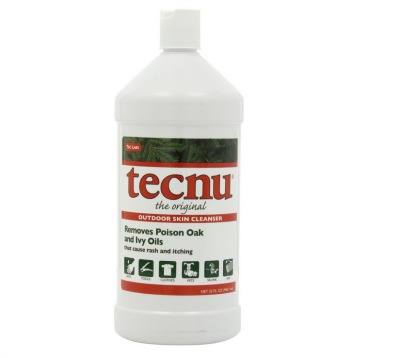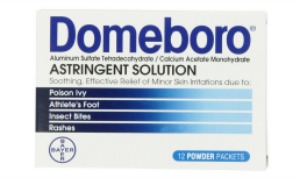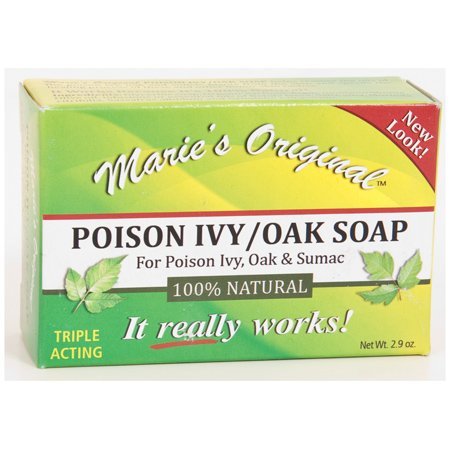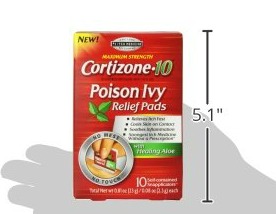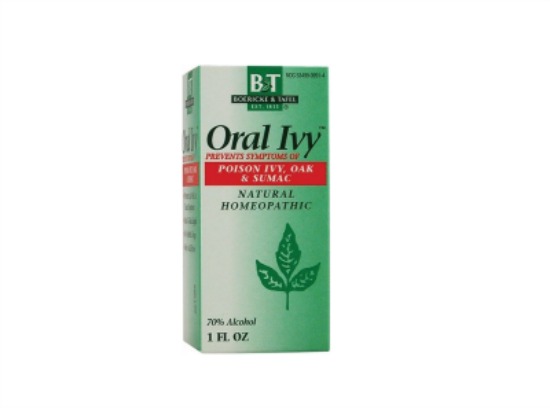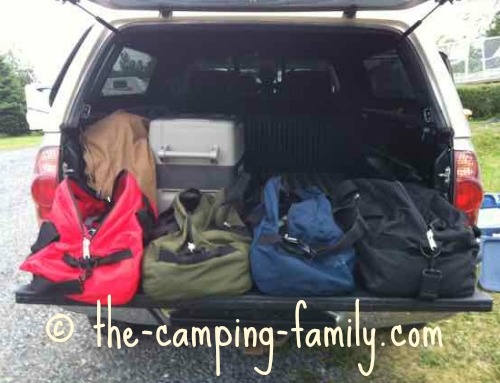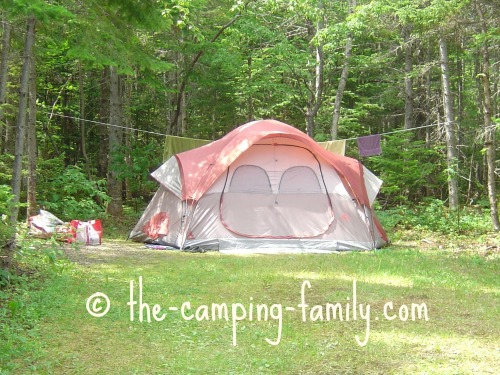Treating Poison Ivy,
Oak and Sumac
I hope that treating poison ivy is not part of your next camping trip!
Since avoiding poison ivy is better than treating poison ivy, I'll teach you how to recognize the plants so you can stay away from them.
If worse comes to worst and you do get a rash from poison ivy, poison oak or poison sumac, I'll tell you what to do about it.
Why do these plants make us itch?
Although poison ivy, poison oak and poison sumac are completely different plants, they all have an oil called urushiol on their leaves and stems.
In most people, urushiol causes a rash which can range from mildly itchy to excruciatingly painful.
Think you are immune to urushiol?
Think again! Even if you have contacted the oil in the past with no reaction, you may react to it in the future.
Since poison ivy is the most common of the three plants, I'll speak here of treating poison ivy - but all of this information applies to poison oak and poison sumac too.
Identifying poison ivy
The best approach is to avoid poison ivy completely. Then you'll never need to know about treating poison ivy!
Sadly, poison ivy identification is not simple. There are many varieties of poison ivy - and they all contain urushiol.
Types of poison ivy plants
Poison ivy can be
- a shrubby plant that carpets the ground
- a vine-like plant that climbs up trees and posts
- an upright plant that can grow up to 3 feet tall
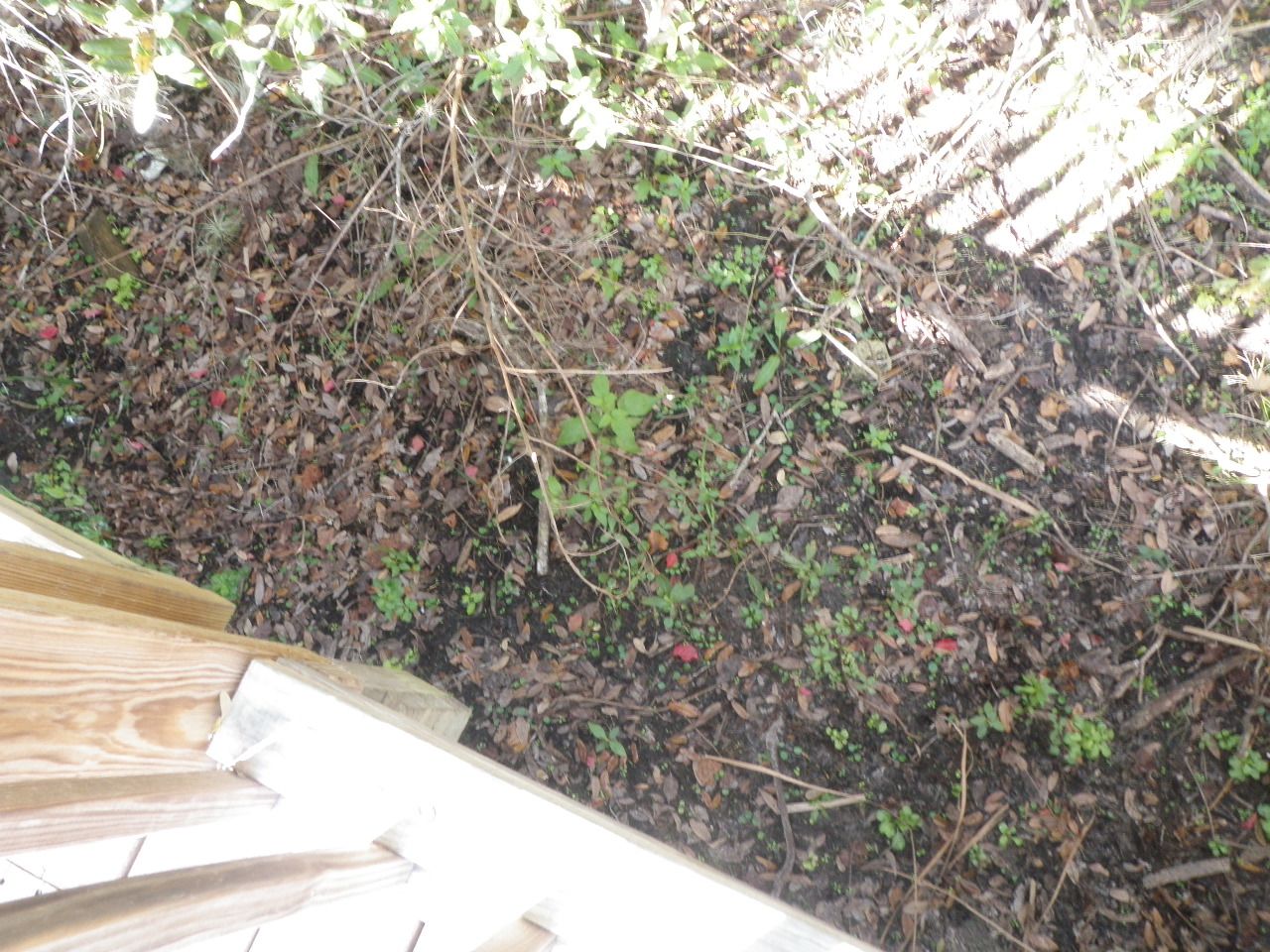
Color of the leaves
Depending on the type of plant and the season, the leaves may be
- dark green
- bright green
- bronze-green
- reddish-green
- tan
- wine-red
Shape and size of the leaves
The leaves may have smooth or jagged edges.
They might be largish or smallish or in between!
Poison ivy habitat
There's no easy answer to that, either.
Poison ivy can grow in the open or in the woods.
It can grow in a moist or dry area. It can grow in sand or in a swamp!
Help! I'm confused!
With all of that variability, how can I possibly identify poison ivy?
The best way to identify poison ivy is to look carefully at the leaves.
No matter their size, they will be sort of oval in shape.
Each leaf is made of three leaflets.
The stalk of the middle leaflet is longer than the stalk of the leaflets on the sides.
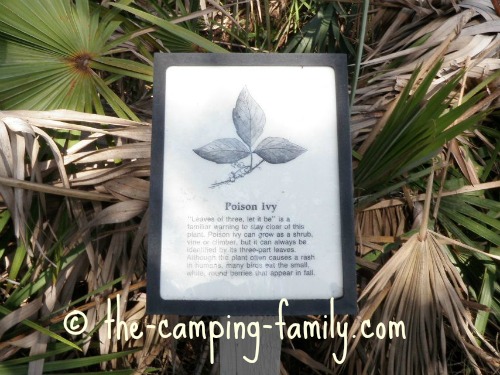
Here are photos of a few more varieties of poison ivy.
Here are some photos of poison oak, and here are pictures of poison sumac.
I think that the best idea is just to avoid any plant with clusters of three leaves! Since a poison ivy rash can be extremely miserable, it's better to be safe than sorry!
Preventing poison ivy rash
If you touch poison ivy
If you think that you may have touched poison ivy (or urushiol oil from any source) you need to remove the oil from your skin immediately, before it has a chance to penetrate. Here's how:
Best
Immediately wash the affected area with a poison ivy removal product.
|
Technu is said to be very effective at removing urushiol. You can use it on your skin, your pets, and your tools. You can even add it to the washing machine to remove the oil from your clothing. If you have already contracted a rash, Technu can provide relief from the itching and pain. | ||||
|
Domeboro gets enthusiastic reviews not only for relieving poison ivy rash, but for speeding up healing of wounds. |
 |
Don't have such a product on hand? Use rubbing alcohol. If you don't have a bottle of alcohol handy, get the alcohol swabs from your first aid kit and swab the affected area.
Don't have alcohol swabs either? Wash the area with beer or another alcoholic beverage.
Next best
Immediately wash the affected area with lots and lots of cold water.
You want to flush the oil away completely, not just move it around, so be sure to use lots of water.
Don't use hot water, which will open your pores and let in more oil.
Treating poison ivy
The bad news
If worst comes to worst and you do contract a rash, there is nothing you can do to speed up your healing.
The rash has to run its course, which can take up to two weeks.
The good news
You can reduce the itching and pain. Here's what to do for treating poison ivy:
Step one
- apply cool compresses (cloths soaked in cool tap water or Epsom salt water) or
- rub an ice cube gently over the rash or
- soak in a lukewarm oatmeal bath
Step two
- let your skin air dry
Step three
Apply
- calamine lotion or
- a paste of baking soda and water or
- a poison ivy relief product or
- a home remedy
Poison ivy relief products
Poison ivy soap
Cortisone pads
Homeopathic remedies
Home remedies for poison ivy
I haven't tried any of these for treating poison ivy so I can't recommend them - but I'm guessing that they can't hurt, and might help:
- a paste of blended raw potato
- a tea made of burdock root (Don't drink it - apply it to your skin!)
- banana peels, applied to the skin wet side down
Do not apply sunburn-relief spray, or any product with benzocaine!
Benzocaine will irritate your skin further and will delay your healing.
If your skin blisters
If you have poison ivy blisters, don't break them!
If they break on their own, treat them as you would treat any other blisters:
- keep the area clean
- cover it to avoid infection
Read this page about first aid for blisters.
Don't worry - the fluid from the blister does not contain urushiol, and cannot spread the rash.
If you have an extreme case
In some cases, a poison ivy rash can be extreme.
You might want to take an over-the-counter antihistamine. Talk to the pharmacist for help in choosing the right one for you.
Some extreme cases will require medical attention.
Contact your doctor if
- the rash covers a large area, or
- the itch and pain are unbearable, or
- the symptoms don't disappear after a couple of weeks
Your doctor might prescribe a corticosteroid cream.
I wish you a camping holiday free of poison ivy!
Portable Shower for Camping
This portable rechargeable camping shower set means you can shower anywhere!
Read more at Amazon here and find the best price!!
Most Popular
Product of the Month
Iwatani Camp Stove
The perfect portable cooktop!
CLICK HERE for more information and best price
Recent Articles
-
Camping Tips For The Best Camping Trip With Your Family
Apr 15, 25 11:21 AM
After years of family camping, we've learned lots of camping tips that make any camping trip easier and happier. Here are our favorites! -
Camping Snacks: Healthy Delicious Treats For Your Next Camping Trip
Apr 15, 25 11:10 AM
Enjoy these healthy camping snacks on your next family camping trip! -
A Portable Camping Toilet Lets You Relax and Enjoy Your Vacation
Apr 15, 25 03:54 AM
Bring along your own camping toilet on your next camping trip and be prepared for anything! Choose the right type of toilet for your family with this simple guide.
